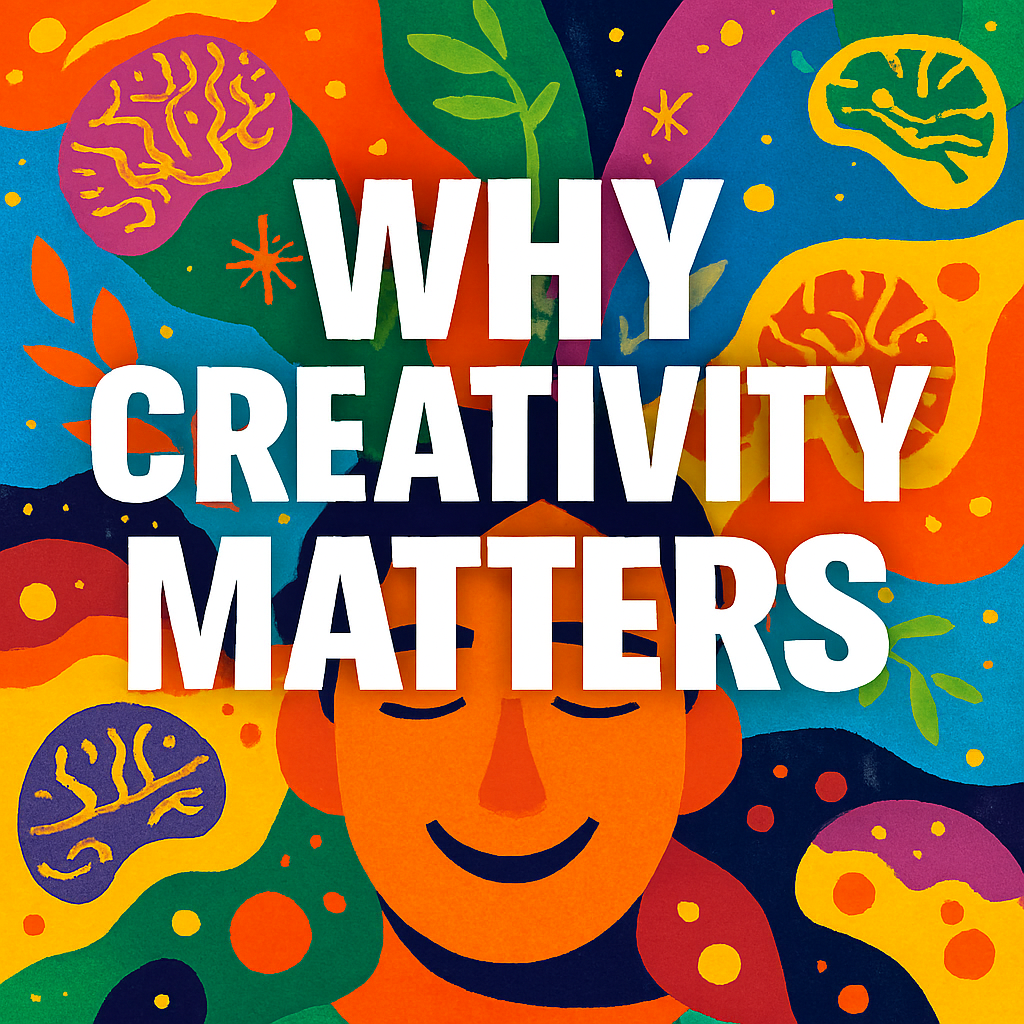
Why Create
Psychology Of Creativity – Exploring The Creative Mind’s Inner Landscape
The Invisible Engine Of Human Innovation
Creativity is not a rare gift—it is a universal cognitive capacity that shapes how humans adapt, express, and evolve. It drives innovation, fuels artistic expression, and enables adaptive problem-solving across disciplines. Psychologists define creativity as the ability to produce outcomes that are both original and valuable, but its psychological roots run far deeper. The creative process involves a dynamic interplay between conscious intention and unconscious association. It is influenced by emotional states, personality traits, environmental conditions, and cultural frameworks. Neuroscience reveals that creativity activates multiple brain networks, including the default mode network, which governs introspection and imagination. Creative cognition also engages the executive control network, responsible for focus and evaluation. These systems work in tandem to balance spontaneity with structure. Creativity thrives in ambiguity, often emerging from constraints rather than freedom. It is nonlinear, iterative, and often unpredictable. The psychology of creativity explores how play, trauma, curiosity, and resilience shape the creative mind. It examines how childhood experiences lay the foundation for adult innovation. Creative individuals often display heightened sensitivity, divergent thinking, and emotional depth. They navigate uncertainty with symbolic clarity and transform chaos into coherence. Creativity is both a personal and collective phenomenon. It is expressed through art, science, business, and everyday life. Understanding its psychological architecture allows individuals and organizations to cultivate innovation more intentionally. This introduction sets the stage for a layered exploration of creativity’s cognitive, emotional, and social dimensions.
Defining Creativity – Cognitive Models And Neural Mechanisms
The Science Behind Original Thinking
Creativity involves generating ideas that are both new and valuable, but its cognitive architecture is multifaceted. Psychologists distinguish between divergent thinking, which produces multiple possibilities, and convergent thinking, which narrows them down. The brain’s default mode network, executive control network, and salience network interact during creative tasks. These networks support spontaneous ideation, focused attention, and emotional relevance. Creativity also involves working memory, cognitive flexibility, and analogical reasoning. It is not confined to the arts—scientific discovery, entrepreneurship, and everyday problem-solving all require creative cognition. Theories of creativity include psychodynamic, cognitive, humanistic, and evolutionary models. Each offers a different lens on how ideas emerge and evolve. Creativity is influenced by both internal traits and external stimuli. It thrives in environments that encourage risk-taking and tolerate ambiguity. The Torrance Tests of Creative Thinking and Remote Associates Test are common measures of creative potential. Neuroimaging studies show increased connectivity between brain regions during creative tasks. Creativity can be enhanced through mindfulness, incubation, and exposure to diverse stimuli. It is often nonlinear, involving sudden insights and iterative refinement. The creative process includes preparation, incubation, illumination, and verification. These stages reflect both conscious effort and unconscious processing. Creativity is also shaped by cultural norms and social expectations. It can be suppressed by fear of judgment or failure. Understanding its cognitive and neural foundations allows for more targeted interventions.
| Cognitive Component | Description | Role In Creativity |
|---|---|---|
| Divergent Thinking | Generating multiple ideas | Fuels originality |
| Convergent Thinking | Narrowing ideas to best solution | Enables refinement |
| Working Memory | Holding and manipulating information | Supports complex ideation |
| Cognitive Flexibility | Shifting between concepts | Encourages novel associations |
| Analogical Reasoning | Drawing parallels between domains | Sparks innovation |
| Default Mode Network | Introspective and imaginative processing | Generates spontaneous ideas |
| Executive Control | Focused attention and goal-directed thinking | Filters and evaluates ideas |
Personality And Creativity – Traits That Shape The Creative Mind
Creativity is deeply influenced by personality, with certain traits consistently linked to higher creative potential. The most robust predictor is openness to experience, a trait that encompasses imagination, curiosity, and aesthetic sensitivity. Individuals high in openness tend to seek novelty, embrace ambiguity, and explore unconventional ideas. They are more likely to engage in divergent thinking and tolerate cognitive dissonance. Conscientiousness can support creativity through discipline and persistence, especially in long-term projects. However, excessive conscientiousness may inhibit risk-taking and spontaneity. Low agreeableness has been associated with creative originality, possibly due to a willingness to challenge norms and resist conformity. Introversion and extraversion both play roles depending on the domain—introverts may excel in solitary creative pursuits, while extraverts thrive in collaborative innovation. Emotional stability contributes to resilience, allowing creators to persist through failure and criticism. The Big Five personality model provides a useful framework for analyzing these traits. Creative individuals often display high self-efficacy and intrinsic motivation. They are driven by internal goals rather than external rewards. Narcissism and psychopathy, while maladaptive, have been linked to certain forms of “dark creativity” in competitive or manipulative contexts. Personality also interacts with cognitive style, shaping how individuals approach problems and generate solutions. Creative thinkers often use analogical reasoning and mental simulation. They are comfortable with paradox and capable of holding conflicting ideas simultaneously. Personality affects how people respond to feedback, with open individuals more likely to integrate critique constructively. Below is a table summarizing key personality traits and their relationship to creativity:
| Personality Trait | Description | Influence On Creativity |
|---|---|---|
| Openness To Experience | Curiosity, imagination, aesthetic sensitivity | Strong positive influence |
| Conscientiousness | Discipline, organization, persistence | Mixed influence |
| Agreeableness | Cooperation, compliance, empathy | Often negatively correlated |
| Extraversion | Sociability, assertiveness | Supports collaborative creativity |
| Introversion | Reflection, solitude, internal focus | Supports solitary creativity |
| Emotional Stability | Calmness, resilience, stress tolerance | Enhances persistence |
| Narcissism | Self-focus, grandiosity | Linked to competitive creativity |
| Psychopathy | Impulsivity, lack of empathy | Linked to manipulative creativity |
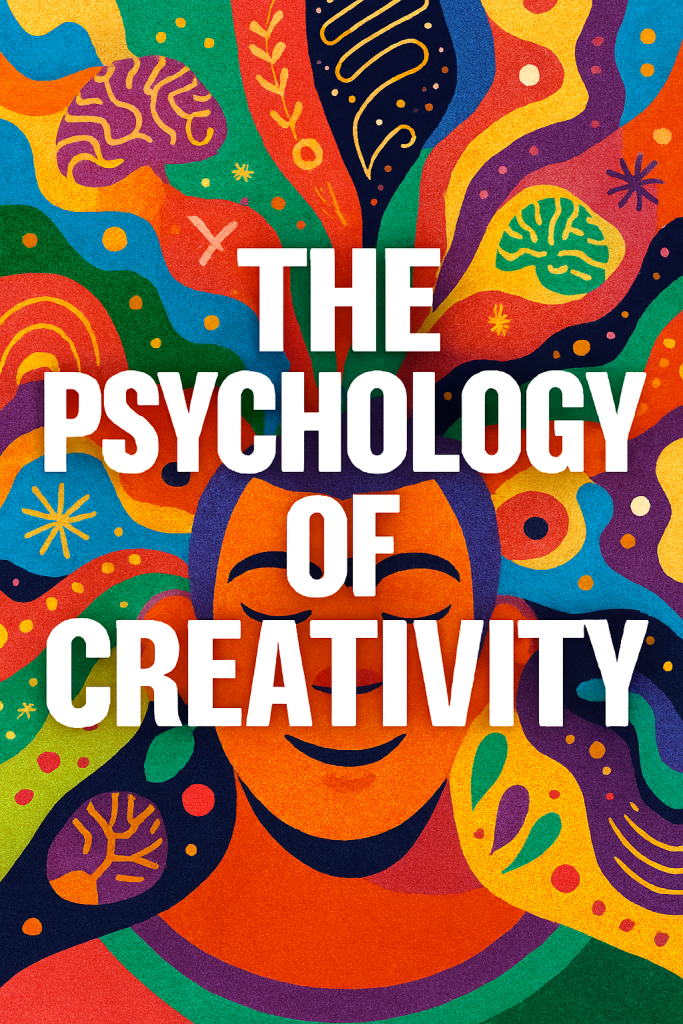
Emotion And Creativity – The Role Of Feeling In Idea Formation
Emotion is a powerful driver of creativity, shaping both the intensity and direction of original thought. Positive emotions such as joy, curiosity, and awe expand cognitive flexibility and encourage exploration. These states activate broader attentional fields, allowing for more diverse associations and novel combinations. Negative emotions, while often viewed as detrimental, can deepen introspection and fuel complex, layered creative output. Sadness and frustration may lead to more nuanced problem-solving and emotional authenticity in artistic work. The concept of “flow,” introduced by Mihaly Csikszentmihalyi, describes a state of optimal engagement where time seems to disappear. Flow is characterized by deep focus, intrinsic motivation, and emotional absorption. Creative individuals often experience emotional intensity, moving between highs of inspiration and lows of doubt. Mood disorders, particularly bipolar disorder, have been linked to elevated creative output in some studies, though the relationship is complex and not universally beneficial. Emotional regulation is key to sustaining creative effort over time. Empathy enhances narrative creativity, allowing creators to inhabit diverse perspectives. Emotional resilience supports risk-taking and the ability to recover from failure. The limbic system, especially the amygdala and hippocampus, plays a role in emotional memory and creative recall. Emotional experiences often serve as raw material for symbolic transformation. Creativity allows individuals to process trauma, express identity, and construct meaning. Below is a table summarizing emotional states and their influence on creativity:
| Emotional State | Description | Impact On Creativity |
|---|---|---|
| Joy | Elevated mood, openness | Enhances idea generation |
| Curiosity | Desire to explore and learn | Fuels experimentation |
| Awe | Sense of wonder and vastness | Expands cognitive boundaries |
| Sadness | Low mood, introspection | Deepens emotional nuance |
| Frustration | Blocked goals, tension | Can lead to problem-solving |
| Flow | Full immersion and focus | Optimizes creative performance |
| Empathy | Understanding others’ emotions | Enriches narrative creativity |
| Resilience | Emotional recovery and persistence | Supports long-term innovation |
Unlocking The Mind’s Most Mysterious Force
Environment And Creativity – External Conditions That Shape Innovation
Physical space, social context, and cultural norms all influence the creative process. Environments that offer sensory richness—such as natural light, varied textures, and open layouts—can stimulate ideation. Noise levels, temperature, and even color schemes affect cognitive performance. Creative workspaces often balance structure with flexibility, allowing for both focused work and spontaneous interaction. Social environments that encourage psychological safety and tolerate failure are more conducive to innovation. Collaboration thrives in settings where diverse perspectives are welcomed and hierarchies are flattened. Cultural values around conformity, risk, and expression shape how creativity is perceived and practiced. Educational systems that prioritize rote learning may suppress creative thinking, while those that encourage inquiry and experimentation foster it. Access to resources—time, materials, mentorship—also affects creative output. Digital environments offer new platforms for creative expression but may also fragment attention. Remote work has reshaped creative collaboration, introducing both freedom and isolation. Urban environments tend to support more interdisciplinary creativity due to density and diversity. Nature exposure has been shown to enhance creative cognition through restoration and reflection. Below is a table outlining environmental factors and their influence on creativity:
| Environmental Factor | Description | Influence On Creativity |
|---|---|---|
| Sensory Richness | Light, texture, color, sound | Stimulates ideation |
| Psychological Safety | Freedom to fail and express | Encourages risk-taking |
| Cultural Norms | Values around conformity and originality | Shapes creative expression |
| Educational Systems | Learning models and pedagogy | Can foster or suppress creativity |
| Resource Access | Time, tools, mentorship | Enables sustained innovation |
| Digital Platforms | Online tools and media | Expands creative possibilities |
| Nature Exposure | Interaction with natural environments | Enhances reflection and insight |
| Urban Density | Diversity and proximity | Supports interdisciplinary thinking |
Developmental Psychology Of Creativity – Childhood Roots Of Original Thought
Creativity begins early in life, shaped by developmental milestones, play, and early experiences. Children display natural creativity through imaginative play, storytelling, and problem-solving. The ability to engage in symbolic thinking emerges in early childhood and lays the foundation for abstract creativity. Secure attachment and emotional support foster exploration and risk-taking. Early exposure to diverse stimuli—books, music, nature—enhances cognitive flexibility. Unstructured play is critical for developing divergent thinking and narrative construction. Children who are encouraged to ask questions and challenge assumptions tend to retain creative capacities into adulthood. Educational environments that emphasize standardization may inhibit creative development. Gifted children often show asynchronous development, with advanced cognitive abilities paired with emotional sensitivity. Creativity in childhood is also shaped by trauma, which can lead to symbolic coping and expressive outlets. Parental modeling of curiosity and openness influences children’s creative attitudes. Language development supports metaphorical thinking and storytelling. Peer interaction introduces collaborative creativity and social negotiation. Adolescents begin to refine creative identity, often through artistic or intellectual pursuits. The transition from childhood to adulthood involves both gains and losses in creative freedom. Below is a table summarizing developmental stages and their creative characteristics:
| Developmental Stage | Age Range | Creative Characteristics |
|---|---|---|
| Early Childhood | 2–6 years | Symbolic play, imagination |
| Middle Childhood | 7–11 years | Narrative construction, curiosity |
| Adolescence | 12–18 years | Identity formation, risk-taking |
| Early Adulthood | 19–30 years | Refinement, exploration |
| Midlife | 31–60 years | Integration, innovation |
| Later Life | 60+ years | Reflection, legacy creation |
Social Psychology Of Creativity – Group Dynamics And Cultural Influence
Creativity is not only an individual phenomenon—it is shaped by social interaction, group norms, and cultural context. Social psychology examines how collaboration, competition, and conformity affect creative output. Group brainstorming can enhance idea generation but may also lead to groupthink if dissent is suppressed. Diverse teams tend to produce more innovative solutions due to varied perspectives and cognitive styles. Social identity influences creative expression, with individuals often aligning their ideas with group values. Cultural norms around originality, hierarchy, and risk-taking shape how creativity is practiced and rewarded. Creative individuals may face social resistance when challenging dominant paradigms. Peer validation and feedback play a role in refining and sustaining creative effort. Social comparison can either motivate or inhibit creativity depending on context. Collective creativity emerges in communities that share symbolic language and mutual goals. Online platforms have expanded the scope of collaborative creativity, enabling global co-creation. Social media introduces both exposure and pressure, affecting creative authenticity. Cultural appropriation and ethical boundaries are increasingly relevant in creative discourse. Below is a table outlining social factors and their impact on creativity:
| Social Factor | Description | Impact On Creativity |
|---|---|---|
| Group Diversity | Varied backgrounds and perspectives | Enhances innovation |
| Social Identity | Alignment with group norms | Shapes expression |
| Peer Feedback | Validation and critique | Refines ideas |
| Cultural Norms | Values around originality and hierarchy | Influences risk-taking |
| Online Collaboration | Digital co-creation platforms | Expands creative networks |
| Social Comparison | Evaluation against others | Can motivate or inhibit |
| Groupthink | Suppression of dissent | Limits originality |
| Ethical Boundaries | Respect for cultural ownership | Shapes responsible creativity |
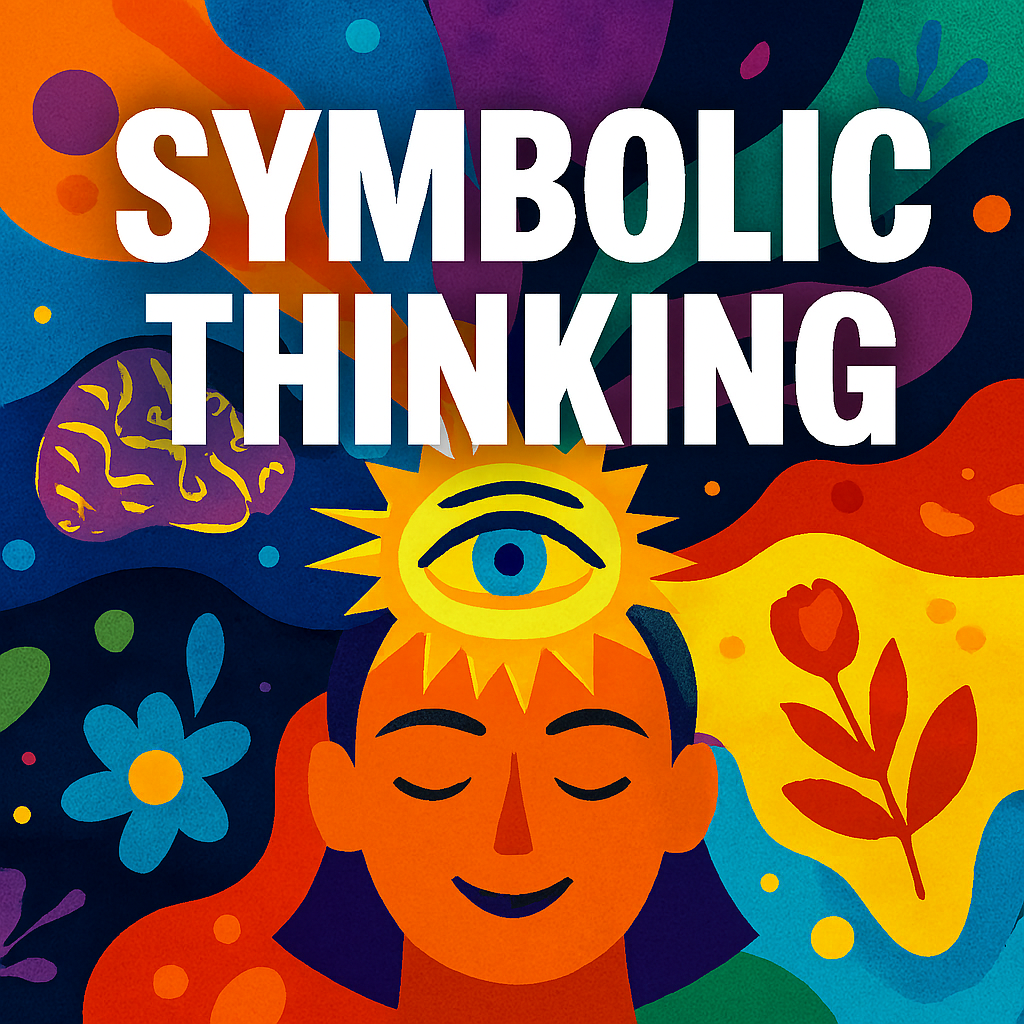
Neuroscience Of Creativity – Mapping The Brain’s Creative Architecture
Creativity is not confined to a single brain region—it emerges from the interaction of multiple neural networks. The default mode network, active during rest and introspection, supports spontaneous ideation and mental simulation. The executive control network enables focus, evaluation, and goal-directed thinking. The salience network helps switch between internal and external attention, identifying relevant stimuli. These networks form a triadic system that balances imagination with discipline. Neuroimaging studies reveal increased connectivity between distant brain regions during creative tasks. The prefrontal cortex plays a key role in planning and inhibition, allowing creators to refine ideas. The temporal lobes support semantic memory and metaphorical thinking. The hippocampus contributes to memory integration and associative learning. Dopamine, a neurotransmitter linked to reward and motivation, enhances creative drive. Brain plasticity allows for the formation of new neural pathways through practice and exposure. Creativity involves both hemispheres, with the right hemisphere often associated with holistic processing and the left with analytical reasoning. However, this division is not absolute—creative cognition is distributed and dynamic. Brain states such as alpha and theta waves are linked to relaxed alertness and insight. Sleep and dreaming also contribute to creative problem-solving through unconscious processing. Below is a table summarizing key brain regions and their roles in creativity:
| Brain Region | Function | Role In Creativity |
|---|---|---|
| Prefrontal Cortex | Planning, inhibition, decision-making | Refines and evaluates ideas |
| Temporal Lobes | Language, memory, metaphor | Supports symbolic thinking |
| Hippocampus | Memory integration, learning | Enables associative creativity |
| Default Mode Network | Introspection, imagination | Generates spontaneous ideas |
| Executive Control Network | Focus, discipline | Filters and structures output |
| Salience Network | Attention switching | Identifies relevant stimuli |
| Right Hemisphere | Holistic, spatial processing | Enhances visual and emotional input |
| Left Hemisphere | Analytical, verbal processing | Supports logical structuring |
Motivation And Drive – What Fuels Creative Persistence
Creativity is sustained not just by talent but by motivation—both intrinsic and extrinsic. Intrinsic motivation, the desire to engage in an activity for its own sake, is the most powerful driver of creative effort. It fosters deep engagement, resilience, and flow. Extrinsic motivation, such as rewards or recognition, can support creativity when aligned with personal values. However, excessive external pressure may inhibit originality. Self-determination theory identifies autonomy, competence, and relatedness as key motivational needs. Creative individuals often pursue mastery rather than performance, focusing on growth over comparison. Passion and purpose provide long-term fuel for innovation. Grit, defined as perseverance and passion for long-term goals, is essential for creative achievement. Motivation fluctuates with emotional states, feedback, and perceived progress. Goal-setting helps structure creative work and maintain momentum. Feedback loops—both internal and external—reinforce motivation through reflection and refinement. Creative blocks often stem from motivational depletion rather than lack of ideas. Rest, play, and novelty can reignite creative drive. Below is a table outlining motivational factors and their influence on creativity:
| Motivational Factor | Description | Influence On Creativity |
|---|---|---|
| Intrinsic Motivation | Engagement for its own sake | Deepens focus and originality |
| Extrinsic Motivation | Rewards, recognition | Can support or inhibit creativity |
| Autonomy | Freedom to choose and act | Enhances ownership and risk-taking |
| Competence | Sense of skill and mastery | Builds confidence and persistence |
| Relatedness | Connection to others | Supports collaborative creativity |
| Grit | Long-term perseverance | Sustains effort through challenges |
| Goal-Setting | Clear objectives and milestones | Structures creative process |
| Feedback Loops | Reflection and response | Refines and motivates output |
Symbolic Thinking And Metaphor – The Language Of Creative Cognition
Symbolic thinking is central to creativity—it allows individuals to represent abstract ideas through metaphor, analogy, and narrative. Metaphors bridge disparate domains, enabling novel connections and insights. Creative cognition often involves mapping one concept onto another, revealing hidden structures. Symbolic transformation is evident in art, literature, science, and spirituality. It enables creators to express complex emotions, challenge norms, and construct meaning. Language plays a key role in symbolic thinking, with metaphorical expression enhancing depth and resonance. Visual symbols also carry layered meanings, allowing for nonverbal communication. Analogical reasoning supports problem-solving by transferring knowledge across contexts. Creative individuals often think in symbols, using them to navigate ambiguity and contradiction. Symbolic thinking is linked to abstract reasoning and conceptual blending. It allows for the integration of emotion, logic, and imagination. Cultural symbols shape collective creativity, providing shared reference points. Personal symbols reflect identity, memory, and transformation. Below is a table illustrating types of symbolic thinking and their creative applications:
| Symbolic Mode | Description | Creative Application |
|---|---|---|
| Metaphor | Comparing unlike things | Enhances emotional depth |
| Analogy | Mapping across domains | Supports problem-solving |
| Narrative | Story-based structure | Builds coherence and engagement |
| Visual Symbolism | Nonverbal representation | Communicates layered meaning |
| Conceptual Blending | Merging ideas into new forms | Sparks innovation |
| Cultural Symbols | Shared meanings and icons | Anchors collective creativity |
| Personal Symbols | Individual motifs and memories | Expresses identity and emotion |
Creativity And Mental Health – The Complex Relationship Between Innovation And Wellbeing
The relationship between creativity and mental health is complex, nuanced, and often misunderstood. While some studies suggest a link between creativity and mood disorders, especially bipolar disorder, this connection is not universal. Creative individuals may experience emotional intensity, which can both fuel and challenge their work. Depression and anxiety can inhibit creative output, but they may also lead to introspective depth. Mental health struggles often prompt symbolic expression and narrative transformation. Creativity can serve as a coping mechanism, allowing individuals to process trauma and reclaim agency. Therapeutic practices such as art therapy and expressive writing harness creativity for healing. Resilience is key to navigating the emotional demands of creative work. Social support, self-care, and boundaries help sustain mental wellbeing. The myth of the “tortured artist” oversimplifies the reality of creative lives. Many creators thrive through balance, discipline, and community. Mental health challenges do not guarantee creativity, nor does creativity require suffering. Below is a table outlining mental health factors and their relationship to creativity:
| Mental Health Factor | Description | Relationship To Creativity |
|---|---|---|
| Emotional Intensity | Heightened emotional experience | Can fuel depth and originality |
| Depression | Persistent low mood | May inhibit or deepen creativity |
| Anxiety | Excessive worry and tension | Can block or sharpen focus |
| Bipolar Disorder | Mood fluctuations | Linked to bursts of creative output |
| Trauma | Psychological injury | Often prompts symbolic expression |
| Resilience | Ability to recover | Supports sustained innovation |
| Art Therapy | Creative healing practice | Facilitates emotional processing |
| Expressive Writing | Narrative self-expression | Enhances insight and coherence |
The Creative Process – Stages Of Idea Formation And Refinement
Creativity unfolds through a series of psychological stages that transform raw thought into refined output. The classic model includes preparation, incubation, illumination, and verification. Preparation involves gathering information, exploring the problem space, and immersing oneself in relevant material. Incubation is a period of unconscious processing where ideas simmer beneath awareness. Illumination is the moment of insight, often sudden and unexpected. Verification involves testing, refining, and evaluating the idea’s validity and usefulness. These stages are not strictly linear—they often loop, overlap, and repeat. Creative individuals may cycle through multiple rounds of incubation and revision. The process is shaped by emotional states, cognitive style, and environmental context. Constraints can enhance creativity by forcing novel solutions. Deadlines, limitations, and challenges often prompt more original thinking than unlimited freedom. Reflection and feedback are essential for refining ideas. The process also involves risk-taking, as creators must navigate uncertainty and potential failure. Playfulness and experimentation support ideation, while discipline and structure support execution. Below is a table outlining the stages of the creative process and their psychological functions:
| Stage | Description | Psychological Function |
|---|---|---|
| Preparation | Research, exploration, immersion | Builds knowledge and context |
| Incubation | Unconscious processing | Allows associative connections |
| Illumination | Sudden insight or breakthrough | Reveals novel solution |
| Verification | Evaluation and refinement | Tests and improves idea |
| Reflection | Meta-cognition and feedback | Enhances clarity and coherence |
| Iteration | Repetition and revision | Strengthens output over time |
Cultural Influence On Creativity – How Society Shapes Original Thought
Culture plays a profound role in shaping how creativity is expressed, perceived, and rewarded. Different societies value different forms of originality, and cultural norms influence what is considered innovative. Collectivist cultures may emphasize harmony and incremental improvement, while individualist cultures may celebrate radical innovation and disruption. Language, tradition, and symbolism shape the tools and metaphors available to creators. Cultural narratives provide frameworks for storytelling, identity, and meaning-making. Access to education, resources, and artistic platforms varies across cultures, affecting creative opportunity. Migration and multicultural exposure often enhance creativity by expanding cognitive diversity. Cultural taboos and censorship can suppress certain forms of expression, while others may flourish in underground or alternative spaces. Rituals, festivals, and communal practices often serve as incubators for creative performance. Indigenous knowledge systems offer unique models of ecological and symbolic creativity. Globalization introduces both homogenization and hybridization, reshaping creative boundaries. Below is a table outlining cultural dimensions and their influence on creativity:
| Cultural Dimension | Description | Influence On Creativity |
|---|---|---|
| Individualism | Emphasis on autonomy and self-expression | Encourages radical innovation |
| Collectivism | Emphasis on harmony and group cohesion | Supports incremental creativity |
| Language | Symbolic system for communication | Shapes metaphor and narrative |
| Tradition | Inherited practices and beliefs | Provides symbolic frameworks |
| Multicultural Exposure | Interaction with diverse cultures | Expands cognitive flexibility |
| Censorship | Suppression of certain ideas | Limits or redirects expression |
| Ritual | Structured communal activity | Inspires symbolic performance |
| Globalization | Cross-cultural exchange | Enables hybrid creativity |
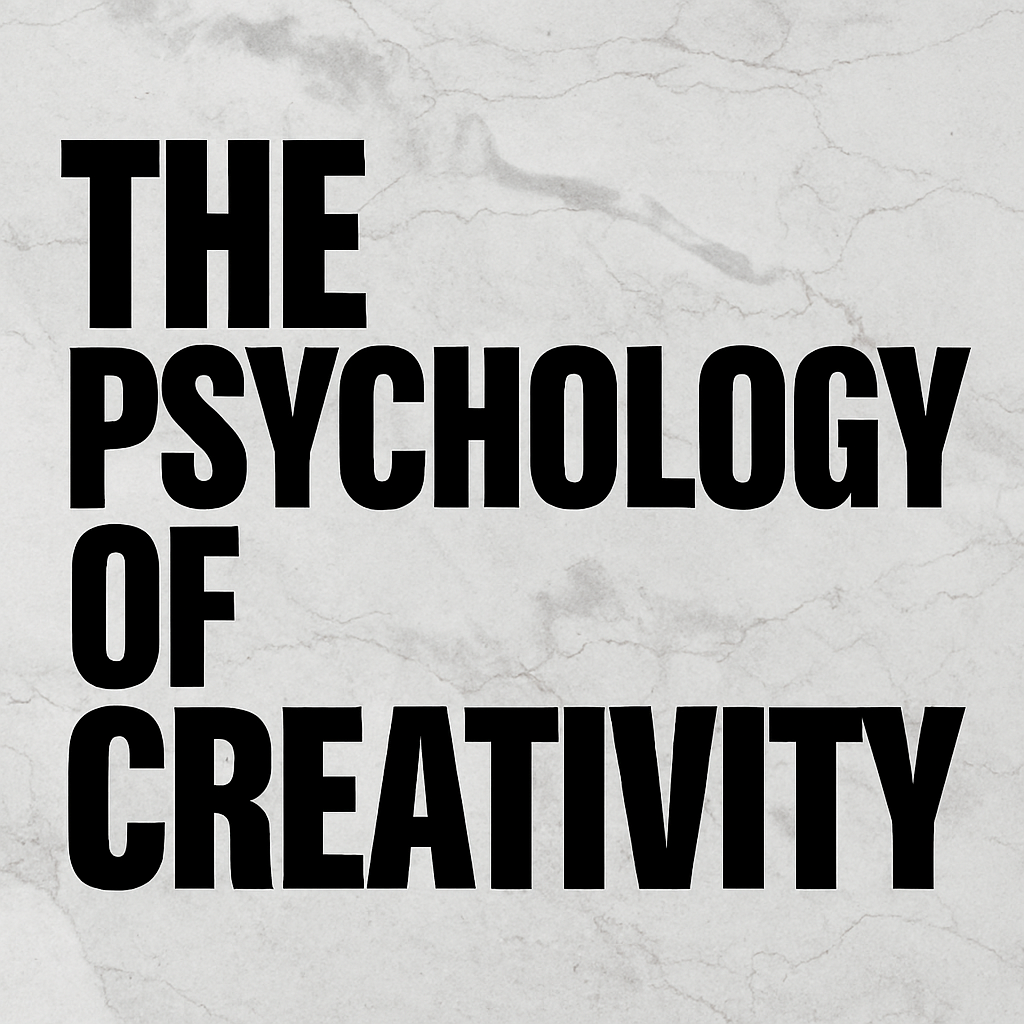
Artificial Intelligence And Creativity – Machines As Co-Creators
Artificial intelligence is reshaping the landscape of creativity, introducing new tools, collaborators, and challenges. AI systems can generate music, art, poetry, and design, often mimicking human styles with remarkable fidelity. These systems rely on pattern recognition, probabilistic modeling, and massive datasets. While AI lacks consciousness and emotion, it can simulate creative output through algorithmic processes. The role of the human shifts from creator to curator, guiding and refining machine-generated content. AI expands access to creative tools, allowing non-experts to produce high-quality work. It also introduces ethical questions around authorship, originality, and ownership. Collaboration between humans and AI can lead to hybrid creativity, blending intuition with computation. AI can assist in brainstorming, editing, and visualization, accelerating the creative process. However, it may also homogenize output if overused or uncritically applied. The psychology of creativity must now account for machine cognition and its impact on human imagination. Below is a table outlining AI capabilities and their creative applications:
| AI Capability | Description | Creative Application |
|---|---|---|
| Pattern Recognition | Identifying trends and structures | Supports design and composition |
| Language Generation | Producing text based on prompts | Assists writing and storytelling |
| Image Synthesis | Creating visuals from descriptions | Enables artistic exploration |
| Music Composition | Generating melodies and harmonies | Expands musical creativity |
| Style Transfer | Mimicking artistic styles | Facilitates hybrid aesthetics |
| Data Visualization | Mapping complex information | Enhances clarity and insight |
| Prompt Engineering | Structuring input for optimal output | Guides machine creativity |
| Ethical Modeling | Embedding values and constraints | Shapes responsible innovation |
Creativity In Education – Teaching Originality And Expression
Education plays a pivotal role in cultivating or suppressing creativity. Traditional models often prioritize memorization and standardization, leaving little room for exploration. Progressive education emphasizes inquiry, experimentation, and interdisciplinary learning. Creative pedagogy involves open-ended questions, project-based learning, and reflective practice. Teachers who model curiosity and vulnerability foster psychological safety. Assessment methods influence creative behavior—rubrics that reward originality encourage risk-taking. Arts education supports symbolic thinking, emotional expression, and narrative construction. STEM fields also benefit from creative problem-solving and design thinking. Educational equity affects access to creative opportunity, with marginalized students often facing systemic barriers. Technology introduces new platforms for creative learning but may also fragment attention. Play-based learning in early childhood supports divergent thinking and imagination. Higher education can either refine or restrict creativity depending on institutional culture. Lifelong learning sustains creative growth beyond formal schooling. Below is a table outlining educational practices and their impact on creativity:
| Educational Practice | Description | Impact On Creativity |
|---|---|---|
| Inquiry-Based Learning | Student-driven exploration | Encourages curiosity and autonomy |
| Project-Based Learning | Real-world problem-solving | Supports interdisciplinary thinking |
| Reflective Practice | Self-assessment and meta-cognition | Enhances clarity and growth |
| Arts Education | Visual, musical, and narrative expression | Builds symbolic and emotional depth |
| STEM Integration | Science and design thinking | Fosters innovation and application |
| Play-Based Learning | Unstructured exploration | Develops imagination and flexibility |
| Assessment Rubrics | Criteria for evaluation | Shapes creative behavior |
| Lifelong Learning | Ongoing education beyond school | Sustains creative development |
Creativity And Leadership – Vision, Influence, And Symbolic Authority
Creative leadership is not just about managing teams—it’s about shaping vision, inspiring innovation, and navigating ambiguity. Leaders who foster creativity balance structure with freedom, offering clear goals while encouraging experimentation. They model curiosity, resilience, and symbolic clarity, creating environments where originality can flourish. Creative leaders often challenge norms, reframe problems, and embrace complexity. They use storytelling to communicate vision and values, anchoring abstract ideas in emotional resonance. Psychological safety is essential—teams must feel free to fail, question, and explore. Leadership styles such as transformational and servant leadership are strongly linked to creative outcomes. Transformational leaders inspire through vision and authenticity, while servant leaders empower others through support and humility. Decision-making in creative leadership involves intuition, empathy, and strategic risk-taking. Leaders must navigate uncertainty, balancing short-term constraints with long-term innovation. They often act as cultural architects, shaping rituals, language, and symbolic frameworks. Creative leadership also involves ethical responsibility, especially when innovation impacts communities or ecosystems. Below is a table outlining leadership traits and their relationship to creativity:
| Leadership Trait | Description | Impact On Creativity |
|---|---|---|
| Vision | Clear, compelling future direction | Anchors innovation |
| Curiosity | Desire to explore and learn | Fuels experimentation |
| Resilience | Ability to recover and persist | Supports long-term creativity |
| Storytelling | Narrative communication | Builds emotional engagement |
| Psychological Safety | Freedom to fail and express | Encourages risk-taking |
| Transformational Style | Inspiring and authentic leadership | Elevates team creativity |
| Servant Style | Supportive and empowering leadership | Enhances collaboration |
| Ethical Responsibility | Consideration of impact | Shapes responsible innovation |
Barriers To Creativity – Psychological And Structural Blocks
Creativity can be suppressed by a range of psychological and structural barriers. Fear of failure is one of the most common inhibitors, leading individuals to avoid risk and stick to safe ideas. Perfectionism can paralyze the creative process, preventing experimentation and iteration. Fixed mindset—the belief that abilities are static—limits growth and exploration. Social comparison and judgment may discourage originality, especially in competitive environments. Time pressure and burnout reduce cognitive flexibility and emotional resilience. Lack of autonomy and micromanagement stifle initiative and ownership. Educational systems that prioritize standardization over inquiry suppress divergent thinking. Cultural taboos and censorship restrict symbolic expression. Internalized beliefs about creativity—such as “I’m not creative”—can become self-fulfilling. Structural barriers include limited access to resources, mentorship, and platforms. Creative blocks often stem from emotional fatigue, unresolved trauma, or lack of meaning. Below is a table outlining common barriers and their psychological impact:
| Barrier | Description | Psychological Impact |
|---|---|---|
| Fear Of Failure | Avoidance of risk due to potential loss | Inhibits experimentation |
| Perfectionism | Unrealistic standards and self-criticism | Blocks iteration and play |
| Fixed Mindset | Belief that abilities are static | Limits growth and exploration |
| Social Comparison | Evaluation against others | Reduces authenticity |
| Burnout | Emotional and cognitive exhaustion | Depletes creative energy |
| Micromanagement | Excessive control and oversight | Suppresses autonomy |
| Standardization | Uniform expectations and testing | Restricts divergent thinking |
| Internalized Beliefs | Negative self-perceptions | Undermines confidence |
Conclusion – Creativity As A Psychological Ecosystem
Creativity is not a singular trait—it is a psychological ecosystem shaped by emotion, cognition, personality, culture, and context. It emerges from the interplay of neural networks, motivational forces, symbolic thinking, and social dynamics. Creative individuals navigate ambiguity, transform emotion, and construct meaning through layered processes. The psychology of creativity reveals that originality is both universal and unique, accessible yet elusive. It is cultivated through curiosity, resilience, and intentional practice. Barriers to creativity can be dismantled through awareness, support, and structural change. Leadership, education, and culture play pivotal roles in shaping creative opportunity. Artificial intelligence introduces new dimensions, challenging traditional notions of authorship and imagination. Creativity is essential for innovation, healing, and transformation. It allows individuals and communities to reimagine possibilities and respond to complexity. Understanding its psychological foundations empowers us to nurture creativity more intentionally—in ourselves, in others, and in the systems we build. This guide offers a modular framework for exploring creativity as a dynamic, symbolic force.
Join The Discussion – Share Your Creative Insights
How do you experience creativity in your own life or work? Which psychological insights resonate most with your process? Whether you’re navigating creative blocks, leading innovative teams, or exploring symbolic expression, your perspective adds depth to this evolving conversation.
#PsychologyOfCreativity #CreativeMindset #SymbolicThinking #NeuroscienceOfCreativity #CreativeLeadership #EmotionalIntelligence #CognitiveFlexibility #InnovationPsychology #CreativeProcess #MentalHealthAndCreativity #EducationalCreativity #AIAndCreativity #CulturalCreativity #ResilientCreativity #CreativeBarriers

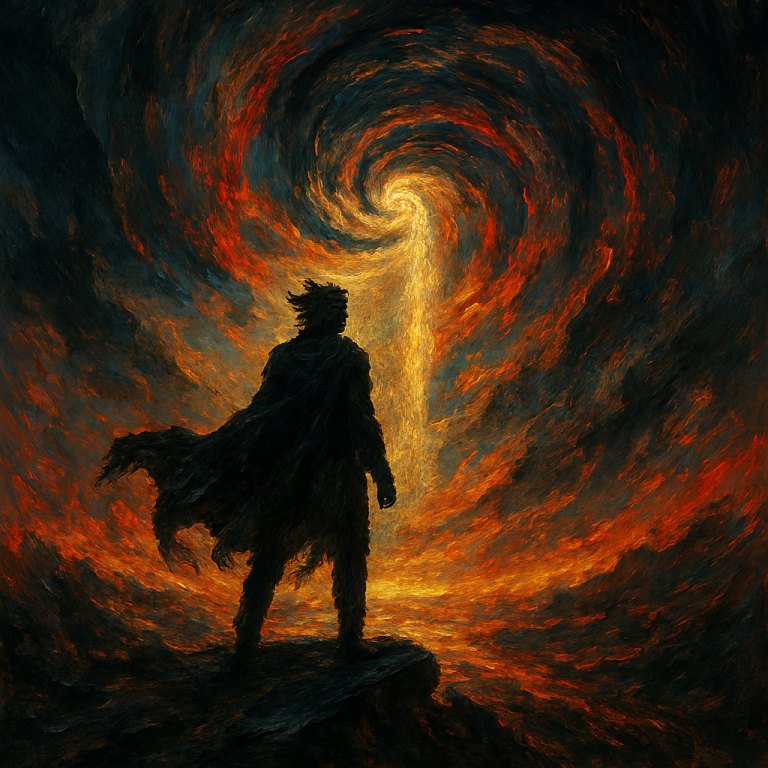

Great article! I’ll definitely come back for more posts like this.
I’ve bookmarked this post for future reference. Thanks again!
Thanks for making this so reader-friendly.
I really appreciate content like this—it’s clear, informative, and actually helpful. Definitely worth reading!
This was a great reminder for me. Thanks for posting.
Looking forward to reading more from you.